Ordering Number: 24467
Katana: In Shirasaya (NBTHK 65th Juyo Token)
Signature: Mumei (Ko-Naminohira 古波平)
Sayagaki by Mr.Tanobe:
the 65th Juyo Token Ko(old)-Naminohira
The blade is Suriage, and appears to have been made in the true form of a large naginata sword. The Masa partially formed in Ayasugi-hada. Whitish Utsuri appears, and the jigane near the hamon is a blackish plain look. The characteristic of Ko-Naminohira's Jigane and the tranquil straight Hamon have the rich taste of an old sword, and the period seems to be the Nanboku-cho period.
written by Tanzan in March 2024
We divide 4 sections for each sword as Saijyo Saku, Jyojyo Saku, Jyo Saku, and Regular Saku.
This sword is ranked as Saijyo Saku for Mumei (Kohachirei).
Habaki: Gold double-layered habaki
Blade length: 71.1cm (28.0in)
Curvature: 2.8cm (1.1in)
Mekugi holes: 2 (one filled)
Width at base: 3.0 cm (1.2in)
Width at tip: 2.6cm (0.9in)
Thickness: 0.8cm (0.3in)
Sword weight: 705 g
Era: the Nanbokucho period (1337-1392)
Shape: wide and thick blade with thin Shinogi-ji.
Jigane: Itame hada with Masa and whitish utsuri.
Hamon: Soft Suguha with rounded Boshi.
Aoi Art’s Comment: Naminohira is a group of swordstmiths in Satsuma that originated from Masakuni and his son Yukiyasu, who emigrated from Yamato to Satsuma in the late Heian period and continued until the late Edo period .The style is strongly characteristic of the Yamato style, but often has strong Masa and forms in Ayasugi hada. This sword has wide blade with a large tip, that is a style of Nanbokucho period. The Jigane and Hamon shows the characteristics of Ko-naminohira, and is in excellent condition.
NBTHK 65th Juyo Paper
Aoi Art estimation paper
Whole oshigata
Price:3,500,000JPY
Order Form
Related Items:
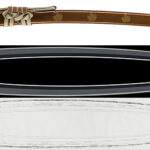 Katana: Nobutsugu(Aoe)(65th NBTHK Juyo Token)
Katana: Nobutsugu(Aoe)(65th NBTHK Juyo Token)
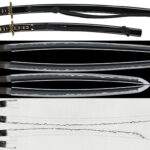 Dai Sho : Motohira(Dai Sho:NBTHK Tokubetsu Hozon Token)(Daisho Koshirae: NBTHK Tokubetsu Hozon Tosogu)
Dai Sho : Motohira(Dai Sho:NBTHK Tokubetsu Hozon Token)(Daisho Koshirae: NBTHK Tokubetsu Hozon Tosogu)
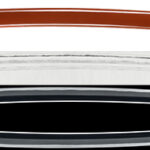 Katana: Mumei(Unsigned)(Aoe school)(54th NBTHK Juyo Token)
Katana: Mumei(Unsigned)(Aoe school)(54th NBTHK Juyo Token)
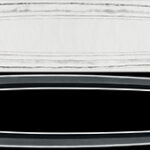 Katana:Signature: Mumei (attributed to Den Cho Aritoshi)(25th NBTHK Juyo Token)
Katana:Signature: Mumei (attributed to Den Cho Aritoshi)(25th NBTHK Juyo Token)
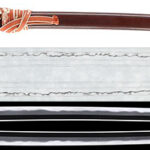 Katana: Hizen Kuni Kawachi Daijo Masahiro (first generation)(61st NBTHK Juyo Paper)
Katana: Hizen Kuni Kawachi Daijo Masahiro (first generation)(61st NBTHK Juyo Paper)
 Katana:Mumei (attributed to Shikkake)(13th NBTHK Juyo Token)
Katana:Mumei (attributed to Shikkake)(13th NBTHK Juyo Token)






